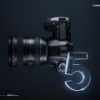Leaderboard
Popular Content
Showing content with the highest reputation on 11/21/2014 in all areas
-
Samsung NX1 Review - The glory of technology
madara and one other reacted to Roman Koenigshofer for a topic
Another great review. Thanks for sharing the in-depth knowledge!2 points -
I'm trying to find most neutral settings on my LX100 (partially probably common with GH4). By neutral I mean getting most data from sensor not modified digitally after captured (by camera soft). What I think after small tests: Contrast: 0 - it looks like -5 is not getting/protecting any additional data. When I lower contrast in post, I get the same shadow/highlight data as -5. It looks like the camera is lowering the contrast after image is burned. Sharpness: -5 - sharpening looks like pure 'post'-sharpening. I can get the same pixel level image as 0 after sharpening -5 in post. Noise reduction: -5 - noise looks nice and I see recovered data (especially with sharpness -5). Saturation: 0? - 0 colors look natural and I don't see a difference when lowering in post vs -5 when needed. But not sure how to test it more detailed. Picture profile: Standard. - More flat Portrait looks like mostly just Standard with lower contrast.. Highlight/Shadow curve: -5/+5 if needed. - In opposite to lowering contrast, here I can see some recovered both highlights and shadows. Not much of them, but always something. The noise in shadows people are complaining about is lower (looks better) than by raising shadows in post instead. As side effect, the colors look different, not sure if easily correctable in post. Do you have any other findings/ideas? Also in GH4 cause probably they are similar.1 point
-

Potential Inspiration
Francisco Rios reacted to fuzzynormal for a topic
Not sure who'll care about this one, but I just noticed that "IDA" is now free for viewers that have Amazon Prime. IMHO, just about every shot is perfect. For me, the film was cinematography on a whole 'nother level. And whattaya know? There isn't any anamorphic, color grading, stabilization, etc. So many of the things that aspirational shooters like myself tend to worry about just aren't part of the visual narrative in this film. Yet, for me, it works. So, you know, kind of informative about what can really matter when telling a motion picture story.1 point -

Best movie of the year, - Interstellar or Gone Girl ?
maxotics reacted to Daniel Acuña for a topic
Yes I get your point ;) I am a film student so I watch all kinds of movies and "old" classics are some of my favorites! I love Hitchcock, Stanley Kubrick is one of my favorite directors (the other one is Terrence Malick), Fellini, Bergman, Sergio Leone, David Lynch, Godard, Truffaut, De Sica, Orson Welles and so many others. I guess one of the reasons I really liked Interstellar is the fact that I love space related stuff (space opera), I am also a big fan of 2001 : A Space Odyssey and I must say Interstellar is just something else compared to other blockbusters from Hollywood that we have today, you can feel the effort made by Nolan to make a Good original Blockbuster movie. But that is just my point of view ;) PS: Yes Gattaca is a great movie I love it! I just wish I could've watched all this classics movies on the big screen and not on Netflix or Blu-ray. That's one of my biggest regrets :)1 point -

FOV perception between photographers and cinematographers
Cosimo murgolo reacted to richg101 for a topic
the tiresome debate. Often the complaints from people saying full frame is too shallow is from those who don;t use such a camera. If the Alexa were available as a full frame version I can almost guarantee most who swear by s35mm would soon switch to the bigger sensor. you need to spend £600-1000 on a lens for s35mm to match the look of a basic £50-100 35mm f2.8 on full frame. Going cheaper and at the required 25mm f2 needs to be used wide open and it's gonna be soft from edge to edge. You need wide and fast lenses if you want to separate visual information using dof creatively - particularly when outdoors. The bigger the scene, the bigger the frame that's required. It's not that full frame is shallower than s35mm. It's that for the same focal length you get a wider fov. if it's too shallow, close the aperture down and you get better optical performance and deeper dof. Nowadays with clean 1600-6400iso on full frame sensors closing down to f5.6 isnt a problem. But onto the subject of the original post, I think one should get to know both formats before deciding. a stills photographer turned motion photographer should stick with full frame since it's what they know. Those saying that full frame looks videoish due to the dof are using the wrong reference material to make their judgement. It's easy to stick a 50mmf1.4 on a 5d and shoot indoors for a single eye being in focus. Put the same setup outdoors and it's ability to separate a subject from its background is very hard to achieve with a smaller frame1 point -

Best movie of the year, - Interstellar or Gone Girl ?
Daniel Acuña reacted to maxotics for a topic
In my 20s I would probably run people over in the street to make sure I got to a movie on time. If I missed even 10 seconds it was totally ruined for me. It would NEVER occur to me to leave a movie in the middle--I never did. If people were talking I physically grabbed them and told them to shut up, no matter how many of them there were. Thirty years later and I can live with missing the beginning of the movie (though I try not to) and I now find it easy, not hard, to walk out of many movies. As for people talking, ironically, I now often find their commentary a lot more entertaining :) Daniel, the point of all my comments is that Interstellar could have been a lot better. I didn't walk out of it. It was watchable. There were good ideas in it. However, I believe that when YOU get a chance to watch more of the classics you will not only become inspired (again, don't have to go back far, GATTACA is already a classic, at least in my book), you will get more enjoyment from good films. That is, when I saw GATTACA I was BLOWN AWAY. It is a great feeling, when you've watched so many movies, to see something new and great. I felt the same way watching "The Wire". When I saw "Fifth Element" it got horrible reviews. I thought it an instant classic. I agreed with what the reviews said, but the cool way he brought fashion in Science Fiction was beautiful to behold. Since that movie I have dreamed of a day stewardesses dress like that :) That's why I ask about Interstellar. Is there something in it that, in time, will be recognized as beautiful/interesting? If I've missed something maybe I'll watch it again.1 point -
What is odd about Interstellar's mess is that it fails precisely at Nolan brothers' proven strengths, - logic and realism. Following, Memento, Prestige, Batman and Inception all were extremely sober and logical, establishing rules and following them, respecting audience's intelligence. This is what is so baffling...1 point
-

Panasonic G6 + vario 7-14
JazzBox gave a reaction for a topic
Drew Gupta (DrewNet) describes the 7-14 as having "distortion from hell itself!" And that's on the BMPCC :unsure: Also, I don't think you can screw an ND on it. Not a video lens really, if you want honesty. Anyone here watch DrewNetwork's videos on YT? I think he's awesome...1 point -
Here is a short we did recently. We hop you enjoy it!1 point
-
Samsung NX1 Review - The glory of technology
madara reacted to cjwilliams0013 for a topic
Awesome Review! This is a tough one for me, I am looking at buying a new camera in the next few weeks. Its going to be hard to decide between NX1, GH4 or the A7S. Hopefully some more test footage will come up in the next few weeks on the NX1 to maybe help make this easier.1 point -

Potential Inspiration
Axel reacted to fuzzynormal for a topic
Yeah, that's the film. I liked it a lot. Personally, I found myself mesmerized at how many times their static shots would just unfold gracefully, subjects moving in and out of frame, or staying still inside it, while always informing the storytelling. If it was just style for style sake, like a ridiculous superficial movie such as Suckerpunch, I'd say it was 'hokum' too, but it's not. The B&W is very purposeful. It forces the viewer's perception of the story, I think. What I find cool about it all is that it's not too hard to understand technically HOW they do all the shots they do. Quite easy really. However, for someone like me, it would be near impossible to recreate their effective storytelling cinema. There's the rub. Even though it's considered minimalist by contemporary cinema style, it's artistically impressive --and if there's one thing I've discovered while trying to be a good craftsman in motion picture creation, simplicity and poignant is incredibly difficult to do well. The film is just a good illustration to me of how tech-centric blogs like this one (which I like a lot) focus their energy in askew direction. If you want to be a good film maker it's not about buying a great camera and owning the coolest new imaging toys, it's knowing how to be a great storyteller; art built upon superior craftsmanship. The gear matters, but it's not as important as beginners and neophytes seem to think it is. Owning the best paint brush in the world doesn't make one a good painter. Those that understand this early-on have a better shot at being successful than those (like me!) that did not. On the other hand, and this is me projecting my own foibles, I tend to think that for many people just playing the game of "awesome camera" ownership is their ultimate goal, whether they admit it or not...1 point -
its a very wide lens - you might want to get something like the Panasonic 14-42mm to go with it so you have asome longer focal lengths covered.1 point
-
100% agree with you! 5D MkII and MkIII look is so "videoish"! Hollywood has a shallow depth of field, but not an extreme, unusable depth of field! And a lot of movies just haven't!1 point
-
I watched a lot of things on planes this year. Dawn of the Planet of the Apes was great, and also enjoyed Edge of Tomorrow more than I thought I would (in Japan they stuck to the original, and way better title, All You Need is Kill). I missed A Most Wanted Man, I really wanted to see that. I enjoyed just how imperfect and photographic Interstellar looked when most films of that ilk are super sharp CG. There was some serious blurriness at the edge of the image (in IMAX anyway), even in the ensemble, medium-long dialogue shots, so that Casey Affleck is delivering a line, and his head is a blurry blob. Take that, corner-to-corner sharpness junkies!1 point
-
if you want to shoot some thing that looks like it has Hollywood movie 'field of views' just remember these 3 focal lengths 27mm for your wides 75mm for the close ups 40mm for the rest of the coverage all referanced to a 35mm motion picture camera or APSC or Micro 4/3 with a speedbooster you can shoot most of your movie on these 3 lenses - or use a 28-70mm zoom that covers almost them all (NIKON!!!) shoot at f2.8 - and off you go .......all else is irrelevant cross referancing to full frame and will just slow you down I ignore full frame totally as I just dont like the look of it.1 point
-

Full Australian movie shot on the Nikon D810
leeys reacted to Guest for a topic
Average D810 demographic: male, 25-55yrs Average demographic for this film: female, 13-23yrs Odd. Image looks good though!1 point -
You're right - it's another trick in the arsenal. Shooting a CU on a 25mm gives a different look to shooting a wide on a 100mm. If you want to be a DP, you should learn what lenses look like and how they react to objects at different distances, and you should also learn how to light. Because of cheap camera systems, these days wannabe DPs focus all their time and energy into the camera body that they think looks the best, and pixel peep, where the real focus shuold be on lensing and lighting. You have ACs and DITs to figure out the specifics of the camera system you choose (though you should know why you're choosing a particular camera system). Some DPs like to be involved in the technical side as well, but it's nowhere near as important as knowing how to lens something, and how to light something. The audience don't know the difference between lenses - and to some extent don't care. However, it is something that does contribute to the way a movie looks, which in turn has an effect on how the audience feels.1 point



